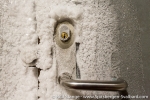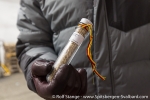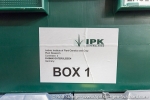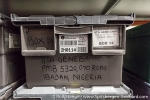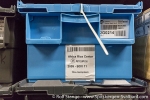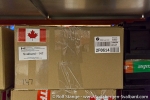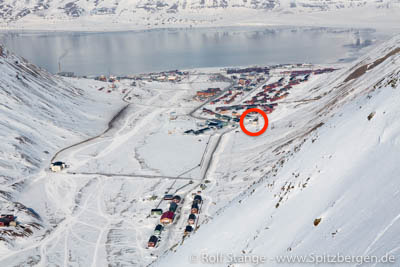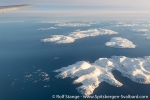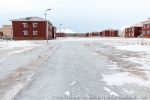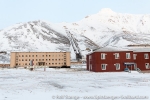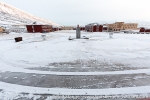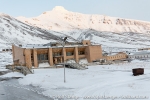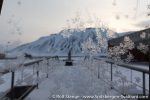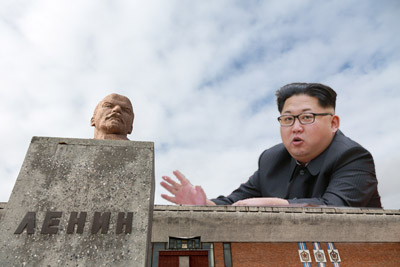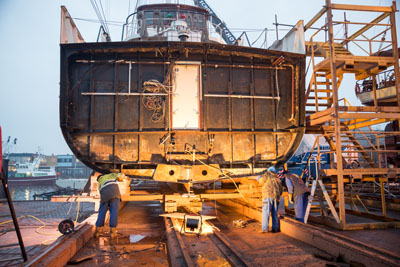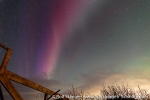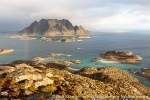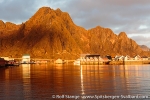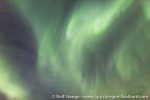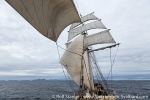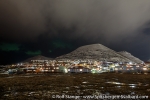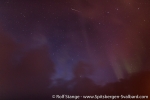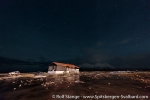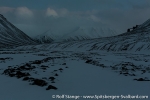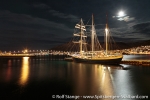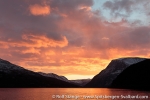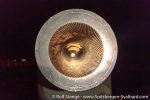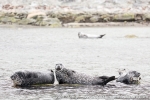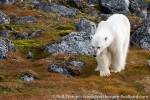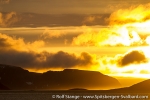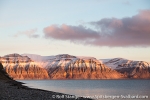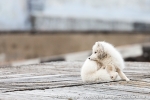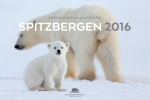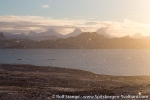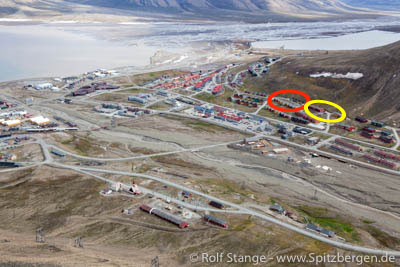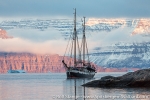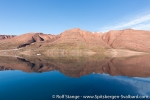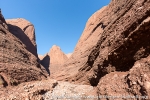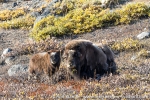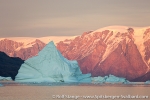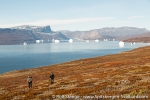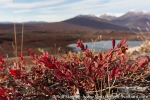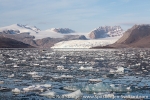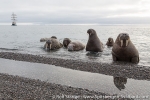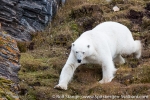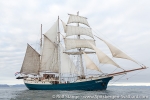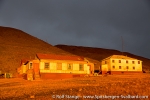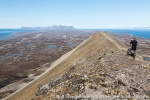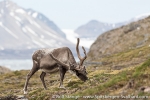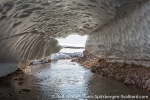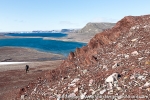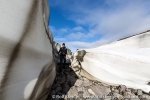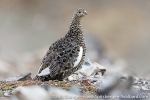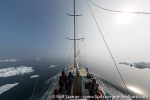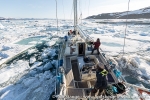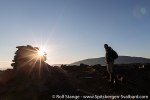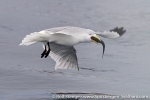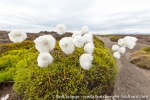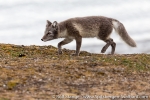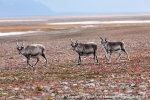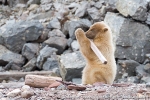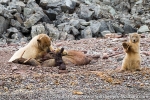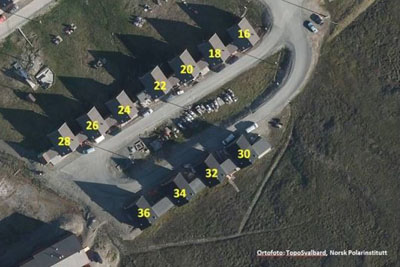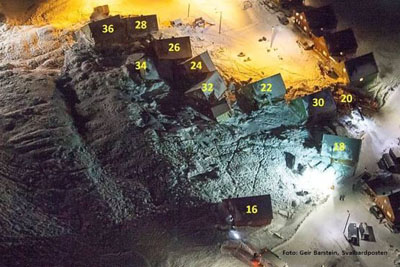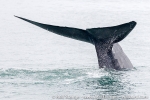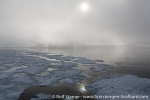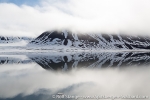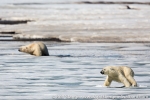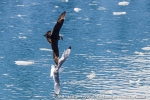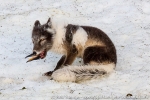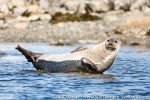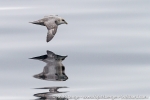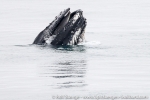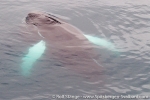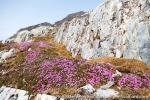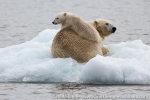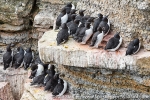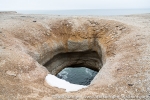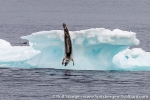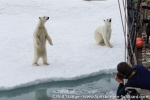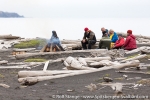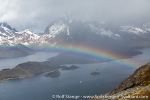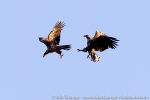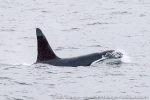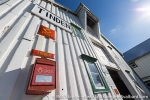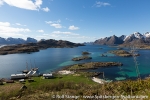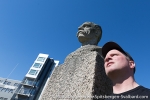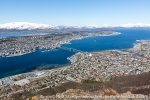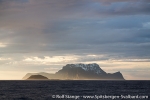-
current
recommendations- Liefdefjord
New page dedicated to one of Spitsbergen's most beautiful fjords. Background information and many photos.
- New Spitsbergen guidebook
The new edition of my Spitsbergen guidebook is out and available now!
- Liefdefjord
New page dedicated to one of Spitsbergen's most beautiful fjords. Background information and many photos.
Seitenstruktur
-
Spitsbergen-News
- Select Month
- April 2024
- March 2024
- February 2024
- January 2024
- December 2023
- November 2023
- October 2023
- September 2023
- August 2023
- July 2023
- June 2023
- May 2023
- April 2023
- March 2023
- February 2023
- January 2023
- December 2022
- November 2022
- October 2022
- September 2022
- August 2022
- July 2022
- June 2022
- May 2022
- April 2022
- March 2022
- February 2022
- January 2022
- December 2021
- November 2021
- October 2021
- September 2021
- August 2021
- July 2021
- June 2021
- May 2021
- April 2021
- March 2021
- February 2021
- January 2021
- December 2020
- November 2020
- October 2020
- September 2020
- August 2020
- July 2020
- June 2020
- May 2020
- April 2020
- March 2020
- February 2020
- January 2020
- December 2019
- November 2019
- October 2019
- September 2019
- August 2019
- July 2019
- June 2019
- May 2019
- April 2019
- March 2019
- February 2019
- January 2019
- December 2018
- November 2018
- October 2018
- September 2018
- August 2018
- July 2018
- June 2018
- May 2018
- April 2018
- March 2018
- February 2018
- January 2018
- December 2017
- November 2017
- October 2017
- September 2017
- August 2017
- July 2017
- June 2017
- May 2017
- April 2017
- March 2017
- February 2017
- January 2017
- December 2016
- November 2016
- October 2016
- September 2016
- August 2016
- July 2016
- June 2016
- May 2016
- April 2016
- March 2016
- February 2016
- January 2016
- December 2015
- November 2015
- October 2015
- September 2015
- August 2015
- July 2015
- June 2015
- May 2015
- April 2015
- March 2015
- February 2015
- January 2015
- December 2014
- November 2014
- October 2014
- September 2014
- August 2014
- July 2014
- June 2014
- May 2014
- April 2014
- March 2014
- February 2014
- January 2014
- December 2013
- November 2013
- October 2013
- September 2013
- August 2013
- July 2013
- June 2013
- May 2013
- April 2013
- March 2013
- February 2013
- January 2013
- December 2012
- November 2012
- October 2012
- September 2012
- August 2012
- July 2012
- June 2012
- May 2012
- April 2012
- March 2012
- February 2012
- January 2012
- December 2011
- November 2011
- October 2011
- September 2011
- August 2011
- May 2011
- April 2011
- March 2011
- February 2011
- January 2011
- December 2010
- November 2010
- September 2010
- August 2010
- July 2010
- June 2010
- May 2010
- April 2010
- March 2010
- February 2010
- November 2009
- October 2009
- August 2009
- July 2009
- June 2009
- May 2009
- April 2009
- March 2009
- February 2009
- January 2009
- December 2008
- November 2008
- October 2008
- August 2008
- July 2008
- June 2008
- May 2008
- April 2008
- March 2008
- February 2008
- April 2000
- Select Month
-
weather information

| THE Spitsbergen guidebook |
Home →
Yearly Archives: 2016 − News & Stories
The famous seed vault – 29 February, 2016
Mon
29 Feb
2016
Of course you may say it is just a big freezer and nothing else. That is, essentially, true. But – again – of course it is so much more than just that. A hope for mankind, a lifering for survivors of global catastrophes. Well, the first sentence may be understated as much as the latter one an exaggeration, but in any way, the seed vault does attract a lot of attention. Something that also led to the new section of this website.
But actually entering the seed vault? Did not happen. It is not a place that normal people would normally get to see. Also some people who are not normal people are said to have waited in vain for that large door to open. Access is strictly regulated, and it was impossible at times when the local fire brigade opposed anyone visiting the vault. A natural safe deep inside a mountain does naturally not have emergency exits.
But occasionally, when new seeds come to the vault, the doors are opened for accredited journalists.
Even though I understood quickly the attention that the seed vault was about to get globally in 2008, I have to admit that I have never really been fascinated. It is neither part of Spitsbergen’s nature nor of its history nor is it connected to those who are living here today. Its context is not the arctic.
What does mankind actually prepare for here? What kind of catastrophes do we have to expect that can wipe out the genetic heritage of thousands of years of agriculture? You may as well say that you don’t really want to know. But it is worth noticing that the whole structure is located high enough above sea level to remain dry even in case all ice on earth was to melt.
Different countries deliver seed samples that represent the whole diversity of their crops, and they are stored near Longyearbyen under conditions that are supposed to make them last as long as by any means possible. The air temperature is strictly controlled and kept at -18°C. Hardly visitors who might cause disturbances, several strong steel doors, surveillance cameras. The whole lot.
A hallway is leading about 150 metres into the mountain before you reach a large hall. The wall that is facing the hallway is not flat, but it is gently curved into the mountain. It is easy to miss this little detail or not to pay any attention to it, but there is a bizarre reason for it: even though nobody knows of any realistic scenario that involves an explosion in the hallway, the shock waves of any explosions would be reflected back into the hallway and thus not hit the actual storage chambers, keeping the seed samples out of harm’s way.
From this hall, double doors are leading to the actual chambers (a bit like in an Egyptian pyramid). Two out of these three chambers are still largely empty.
The door to the third one is covered with ice, as it is constantly cold in there. At the time being, it is probably the coldest part of Spitsbergen anywhere. A last fence separates the visitor from the treasure, a code opens the door. Behind that door, there are huge storage racks. And there, boxes, boxes and boxes.
A suspicious gap shows where the first samples have already been retrieved again. They were from Syria and more seeds are grown now of their sorts – in Morocco, where the Syrian seed vault had been moved before it could be destroyed in the war.
Gallery – The famous seed vault – 29 February, 2016
- gallery anchor link: #gallery_859
Click on thumbnail to open an enlarged version of the specific photo.
You are walking past those racks in awe. Institutions that are devoted to the science of rice, wheat or potatoes have preserved their valuable treasures here for, well, not eternity, but as close to as possible. Most countries are represented, only a minority is still missing. North and south America, Africa and Europe, Asia, Australia, they are all in there. Some wooden boxes catch the eye because of their simple appearance: north Korea. They signed the Spitsbergen Treaty just a few weeks ago, and now the are also here in the vault.
Some inconspicuous boxes draw my attention, and I am getting goosebumps just a moment later. The sender: The International Centre for Agricultural Research in the Dry Areas, in short ICARDA. Their address: Aleppo, Syria. In this town, now destroyed by Syrian and Russian bombs, someone had been collecting seed samples to preserve them to better days in the future, when people will hopefully be able again to grow them, to take care of the nutrition of their families, their people, their country. It seems a bizarre hope! The simple boxes in the storage racks inside the permafrost of an arctic mountain are symbols of this desparate hope. May their contents find their way back into Syrian soil when it is not corrugated by bombs, but by ploughs!
The seed vault left a strong impression on me, that is for sure.
Living house in Longyearbyen in danger of collapse: evacuation
Longyearbyen is currently having tough times, especially if you happen to live in the wrong house: after the catastrophic destruction of 11 houses and the loss of two lives during an avalanche before Christmas, the old hospital had to be evacuated very quickly last week. The old hospital (gamle sykehuset) is near the Spitsbergen-Hotel (formerly Hotel Funken) upvalley from the centre. It was built in 1954 and converted to a living house with 16 flats in 1997.
More recently, the building had shown signs of movement such as minor cracks in walls and shifting angles – nothing that caused any greater concern, but it caught enough attention to ask for the report of a civil engineer. The result came Thursday last week and it hit the inhabitants like a hammer: at 4 p.m. people were told that they had to leave their homes until 10 p.m. the same day. Anything they were unable to remove from their homes would be out of reach for some time, as it was not allowed to enter the building at all from then on, initially.
Currently, the inhabitants get permission to enter their homes under restrictions to retrieve their belongings as much as possible. Some have already offered their belongings for sale or even for free to anyone who is able to pick it up.
The building is in danger of collaps, but when this may or may not happen is not known. It may collapse today or stand for another year or more. But it is not expected that people will be able to move back.
For the inhabitants, who are mostly the owners of their homes, this came as a total shock and, in some cases, it is likely to be a complete economical disaster.
The local administration (lokalstyre) has offered temporary accommodation to those concerned, but only for a couple of weeks. Not a lot of time for every for everybody to find new homes.
The old hospital (gamle sykehuset) lies within a calmer dwelling area a bit away from downtown Longyearbyen. Currently, it is not quite as calm there: the inhabitants were evacuated on very short notice last week.
Pyramiden – February 2016
Tue
23 Feb
2016
After our arctic weekend in Spiceborough (Würzburg, haha) things happened quickly: from the presentation screen to the train station, train, airport, plane, airport, hotel, airport, plane, and then suddenly … Spitsbergen. Stop, before I got that far I got a brief glimpse of mainland Norway’s northernmost coast. In the far background, you can almost see the North Cape (use a bit of fantasy and then you will see it), but this long, narrow island under the wing tip and a little bit to the right, that is Fugløya. We will be sailing there in late May with Antigua and then set course for Bear Island … but that is another story, a summer story. First, arctic winter. Although it is a strange winter, with little snow and very little ice in the west coast fjords. Some scientists believe that it may have to do with El Niño, the temporary change ocean currents in the Pacific, which has consequences for the climate of the whole globe. But it would be hard not to think of longer-lasting climate change as well. Of course, there have always been bad ice years every now and then. But the long-term tendency? That is pretty clear.
Gallery – Pyramiden – February 2016
- gallery anchor link: #gallery_858
Click on thumbnail to open an enlarged version of the specific photo.
I am joining a camera team. My job is not in front of the camera this time, but behind. One of our first trips takes us to Pyramiden. Fascinating as always, but different: parts of the place are a skating rink. Very little snow, lots of ice. And no Sascha. But he will be back within a few days. We have been to Pyramiden even before Sascha came! Yoho!
North Korea signs Svalbard Treaty
While North Korea is provoking the world by testing nuclear weapons and long-range missiles, the regime has signed the Svalbard Treaty on January 25 without much public attention. This treaty, which was signed in 1920 in Versailles and came into force in 1925, gave Norway sovereignty over the Spitsbergen archipelago (the original treaty document does not have the name Svalbard) while maintaining rights of signatory governments and their citizens to be economically and scientifically active without the need for a general permission. One of the consequences is that Spitsbergen is, in contrast to mainland Norway, not part of the Schengen Treaty area.
Svalbard is not unknown in the far east: especially in Thailand, people are quite aware of this unique job opportunity that does not require residence or work permits. The third-largest population group in Longyearbyen are Thai people, which have been forming an important part of the social and economic structure of the town for many years by now.
It is not known if the North Korean regime plans their admission to the treaty to be followed by any practical steps or any kind of presence. North Korea is also member state of the Antarctic Treaty (without voting rights). As far as known, the only North Korean activity in Antarctica was the participation of some scientists in a Soviet expedition in 1989/90.
What is Kim Jong Un doing in Svalbard? Creepy duo in Pyramiden (photo composition).
Looking back at 2015 – December
While I am talking about good old Antigua: right now, she is in the shipyard. Cut into two parts. No iceberg and now underwater rock are the reason for this, but the owner’s plan to make her a bit longer. Half of the cabins will be a bit larger from 2016. But there won’t be more cabins and no more beds than so far, so not more people than we are used to, and that is important. And they say that a longer hull is making for better sailing abilities. I am looking forward to a renewed Antigua in 2016!
Antigua reloaded, December 2015. Photo © Svenja Hollank.
Meanwhile, the polar night has come over Svalbard. What should have been a peaceful and silent arctic winter brought disaster to Longyearbyen just before Christmas, when a snow avalanche went into a housing area, strongly damaging 11 buildings and killing two people. So the year 2015, which has brought war and terror to many countries, comes to a sad end also in Spitsbergen. Let’s hope that 2016 will bring as many great adventures as 2015, but less sad ones.
During the season of the short days, I am sorting the trips of the past, getting triplogs, videos and photo galleries ready, which I recommend to everybody who wants to leave their home or office mentally for a moment to take a virtual trip up north. New trips are being planned, with Antigua, with Arctica II, with Ópal (in 2017), with Aurora. To Spitsbergen, Greenland and Jan Mayen. A new focus on hiking, in early September. This all takes time for a lot of thinking and planning. 2015 has seen 166 news and blog entries on this website. Also new book projects are getting on. Several ones are in the making, some in a stag quite advanced. So I can promise new books, but I am not going to say anything about timing. I am not planning an airport, I am just writing books. Nobody is paying me for that. So I don’t have to promise anything and I don’t have to excuse anything in case it takes more time. That keeps life easy (kind of).
I wish all readers a good and happy new year! Great trips in high or low latitudes, health and happiness! Maybe our paths will cross, near the poles or somewhere in between. Under the midnight sun or the polar light.
Cruelty to polar bear in Russia
I guess I have to warn you here: this is not for the faint-hearted. The story and a related video on youtube are disturbing.
There has been an extreme case of cruelty to a polar bear on Wrangel Island in the far eastern Russian arctic. A female polar bear accompanied by cubs had visited a construction site regularly. Appearently, she had become used to people, who fed her regularly. In November, a firecracker was mixed into the food and exploded in her mouth, heavily injuring the animal. A youtube video shows the bear moving around in great pain and losing blood. The firecracker is said to have been a military-type banger normally used for military education and training, containing 80 gram gunpowder.
The offender was the cook, who said later that it was an act of self defence, an attempt to divert the polar bear’s attention away from another nearby person. This is, however, unlikely to be true, according to local media, who report that the bear had been used to people and never showing aggressive behaviour. It is said that workers quite commonly photographed themselves together with this particular polar bear.
A video is circulating on youtube, showing how the polar bear is suffering from strong pain and bleeding severely. Information about the condition of the bear since is contradictory: there are statements that she is alive, but others say she has not been seen since.
Initially the offender seemed to get away with a symbolic fine, but since the case drew international attention on the web, politicians including Russian Environment Minister Sergej Donskoj and the governor of Chukotka have demanded investigations and a lawsuit. The Attorney General has taken up investigations, which may lead to imprisonment up to 3 or 7 years, depending on source.
A petition on thepetitionsite.com is supposed to increase pressure on Russian authorities to take strong steps.
The online petition does not contain disturbing images, but the above mentioned youtube video is tough stuff: cruel and disturbing. If you want to see it, then this is the link.
The offender was (is?) working for the company Русальянс (Russallians), which is contracted by the Russian Ministry of Defence. Officially, the company is supporting a foundation that is working for the arctic environment, including a “harmonic relationship between humans and animals”.
Screenshot of the youtube-video.
Source: Stuttgarter Nachrichten
Looking back at 2015 – November
November is not the time for long outdoor trips in the arctic. A slightly confused English tourist did not see any reason why he should not walk on his own from Longyearbyen to Pyramiden – in the polar night. Local could finally convince him that this was not a great thing to do.
Our last miles with guests on SV Antigua went in north Norway, getting out of the way of a big storm east of Tromsø. Later, we found the northern lights that we had all come for, and the glorious Lofoten scenery that makes this area unforgettable. Admittedly, something else that is quite unforgettable is the mighty Adolf gun near Harstad. So I just had to mention it here. Done that now, enough of it.
- gallery anchor link: #gallery_850
Click on thumbnail to open an enlarged version of the specific photo.
Thank you, Antigua, for great trips again in 2015! This includes, of course, all good people who have been part of it. The crew, the colleagues, the guests. Good people, good times, good stuff.
Looking back at 2015 – October
October began with this year’s last days in Spitsbergen spent on SV Antigua. This is of course nothing dramatic, quite the opposite, it feels good when a good time is coming to an end and you can realize that is has actually really been a good time, without any accidents or other major unpleasant events. Instead, we got our final polar bear sightings and the beautiful light of the arctic fall in a landscape that is more and more getting into winter mode.
Jan Mayen memories came back as I showed the pictures during a presentation at Svalbardmuseum in Longyearbyen, while northern lights were dancing on the night sky.
It was not just in nature that were lights were turned off, but also in the Norwegian mines in Spitsbergen. Not completely and finally, but it does look dark and the working force has been reduced drastically in 2015. Longyearbyen is shrinking, something the place is not used to at all. And Sveagruva is shrinking even more. There, they are getting ready for years of being a sleeping beauty. But nobody knows if this sleep will ever really end to give way to renewed activity.
- gallery anchor link: #gallery_849
Click on thumbnail to open an enlarged version of the specific photo.
My Spitsbergen calendar 2016 saw the light of day at this time, the fourth of its kind in a row.
Longyearbyen avalanche: more houses damaged
Soon after the evacuation was lifted on Tuesday evening it turned out that more houses are damaged so strongly that they have to be abandoned. The inhabitants had to leave them again soon. The houses are located in Vei 228 (yellow circle in picture below) and owned by the state-owned Statsbygg, who was at least able to quickly provide replacement accommodation. It is at least possible to return to the buildings to get personal belongings.
This is more luck than those have who lived in the now strongly damaged houses (red circle) hit by the avalanche with full force. This area remains closed to all non-authorized traffic according to Lokalstyre (the local administration), who will make a plan how the former inhabitants can get their personal belongings.
Queen Sonja of Norway and minister of justice Anundsen visited the avalanche site on Thursday afternoon.
A family who have lost their home in Vei 236 and almost their lives have now published their dramatic experience of the avalanche in Svalbardposten. They were in their kitchen, having breakfast with their two little children and a friend when the avalanche hit. They were completely buried in snow before anyone could react and they just managed with a lot of luck and the power that comes from desperation to get themselves at least partly out of the snow until help came. Altogether it took about three quarters of an hour to get everybody out. They were buried under up to two meters of hard snow, mixed with sharp fragments of wood and other debris. They were taken to hospital and partly treated for hypothermia in advanced stages. Due to an amazing amount of luck and a lot of help during and after the dramatic event, they are all well now.
The residential area hit by the avalanche. The houses marked by the red circle are largely destroyed. As it turned out now, some buildings in Vei 228 (yellow circle) also have to be abandoned.
Looking back at 2015 – September
A memory card lost in the arctic wilderness in 2009 was returned to the owner after six years, to her (the owner’s) great pleasure.
Meanwhile, I had the great pleasure to spend a very memorable week with the Icelandic schooner Ópal in Scoresbysund in east Greenland. What can I say. A stunning display of arctic colours, a landscape on a scale of its own kind. A heavy storm raging out on the open sea and in Iceland, calming down just in time to let us fly out without problems – yes, some luck on your side is always helpful. And so is a buffer day in Iceland if you come back from Greenland, just in case. I just mention it …
- gallery anchor link: #gallery_848
Click on thumbnail to open an enlarged version of the specific photo.
In Spitsbergen, September brings the often underestimated magic of change between day and night back. Sunsets and … of course, northern lights. Which we got. And, after several years, finally again a landing on Moffen, a forbidden island in the summer. The walrusses there were obviously happy to see some people. They don’t get to see too many there.
Looking back at 2015 – August
I was on the sailing yacht Arctica II when July left and August came. This summer was unusually ice-rich in Svalbard, so we expected to be unable to circumnavigate Spitsbergen, something that had not been the case for several years. But who would complain about too much ice in the arctic? Usually, we are moaning about the opposite these days.
Crossing Prins Karls Forland from west to east is not quite like crossing Greenland. It can easily be done as a day hike. But how often do you have the opportunity? The sea calm enough to go ashore on the exposed outer side? The weather good enough to make it really enjoyable? Everything worked out well and we all thoroughly enjoyed the stunning views over Prins Karls Forland and the adjacent seas and mountains.
Something that crosses my mind when I think back of this trip is the days that we spent in the ice in the southeast. The combination of ice and current in Heleysund was indeed spectacular and something one would not necessarily want to do every day. Having done that, we considered the circumnavigation a fact and I was happy to get to Barentsøya and Edgeøya. A summer without getting to these islands in southeastern Svalbard would not be quite complete.
Not quite complete as of yet was our circumnavigation, as it turned out. The ice in southern Storfjord actually almost made us doubt it would happen at all, but after spending some time looking for a passage, the strong Hurtigruten ship Fram suddenly came, pushed into the ice, thus creating a channel that we could use comfortably.
- gallery anchor link: #gallery_847
Click on thumbnail to open an enlarged version of the specific photo.
While were were circumnavigating Spitsbergen not without some effort, some brave adventurers went around Nordaustland – in sea kayaks! Actually, two teams did this almost simultaneously. For one of them, it was just a part of a pretty extreme trip from and to Longyearbyen. This was one of the last big „firsts“ to be had in Svalbard. Congratulations!
Avalanche in Longyearbyen: evacuation lifted
The weather in Longyearbyen is finally settling with temperatures below zero and little wind, so authorities could now lift the evacuations and general ban on any traffic in areas on the eastern side of the settlement. People are free to return to their homes since Tuesday evening, 2000.
The catastrophic avalanche before Christmas, which destroyed 11 houses and killed two people, was followed by an evacuation of a total of 114 flats. Consequently, about 200 people had to leave their homes, near 10 % of the total population. The exact number is unknown, as not everybody concerned reported to the authorities. Some are also, as is quite common, on Christmas holidays, following the events from warm beaches far away.
At the same time, the avalanche hazard for parts of Longyearbyen is highlighted by authorities. This risk had been known for a long time, but now it has brutally come to everybody’s minds, finally. A preliminary system with actual avalanche risk evaluation has been installed on varsom.no, as has been commonly used in mainland Norway for some time already. Ways to deal with the risk locally will be discussed now. Areas at risk will be mapped and then measures from technical safety means to – potentially – permanent evacuation of some areas will considered. The local community administration (Lokalstyre) is responsible, in cooperation with relevant technical authorities.
The lack of safety measures, a warning system and public awareness, also within the authorities, has received criticism, as the risk had been known for many years. Longyearbyen will see a debate about responsibility.
The relevant part of Longyearbyen before the avalanche (image © Norwegian Polar Institute).
The relevant part of Longyearbyen after the avalanche. Houses can be identified in both images by the numbers. Buildings have been moved up to 80 metres (photo © Geir Barstein/Svalbardposten).
Source: Sysselmannen
Looking back at 2015 – July
The long circumnavigation of Spitsbergen with SV Antigua is always an important milestone in peak season. This is the case even when the trip turns out not to be a circumnavigation. Instead, at some point we had to continue the opposite way. Not only does this sound better than going back, but it is quite true. This point was reached at the ice edge in southern Hinlopen, where it became obvious for everybody who was there that a sailing ship, and actually any vessel other than the very strongest ones, would not continue any further that way. But think of all we would have missed had things gone any other way! The whales far out on open sea, the Little auks in Hyttevika … to mention just to events that cross my mind very spontaneously.
- gallery anchor link: #gallery_846
Click on thumbnail to open an enlarged version of the specific photo.
The polar bear in Raudfjord that appeared exactly where I had picked up the last ones just minutes earlier. The colours of the tundra, full with countless flowers, surprise meetings with scientists … not to mention the three polar bears, not related, who happened to be all in the same place, on the ice of the lagoon of Mushamna, following their individual ways for hours, meeting occasionally for moments, keeping a watchful eye on one another. No human will ever know what a polar bear really thinks of any other polar bear. Usually, they will treat each other with respect and be rather careful. We were blessed with an opportunity to observe that for the best parts of a memorable day.
Looking back at 2015 – June
Just in time as May gave way to June we arrived with SV Antiuga in southern Spitsbergen, coming from Bear Island. A definite highlight amongst this year’s events is the encounter with a polar bear family in Van Keulenfjord. Who could ever forget that? Antigua was moored along the fast ice edge, in peace and silence, until in the very early morning hours the officer on watch came down to wake everybody up. The polar bear family that had been seen already the day before, kilometres away out on the ice, had come to the ship out of curiosity. The mother was a bit more careful and stayed more in the background, but did not mind her two cubs, both looking well and healthy, coming straight up to the ship and investigating us from all sides. An amazing way to start a day!
A nuisance for those concerned, but later an event not without some entertaining value: Longyearbyen airport was running out of fuel. A nice little reminder that the arctic is still a remote place, and even these days it may happen that supplies are not always available when they are needed. Some flights directly bound for Oslo had to make a stopover in Tromsø for refuelling.
Meanwhile, many were wondering if polar bears now have discovered dolphins as their favourite prey, as seen and photographed the year before, and now photos and discussions were coming up. Weird. Obviously nobody has spent much thought on how polar bears should get hold of dolphins on a regular basis. When nature happens to serve dolphins on a silver tablet, for example by them getting stuck in ice in a fjord, then a polar bear wouldn’t be a polar bear if he said no to the opportunity. But that is really no news.
- gallery anchor link: #gallery_845
Click on thumbnail to open an enlarged version of the specific photo.
Later in June, I could add another experience to the already long list of this year’s memorable and pleasant events: the view from the top of Beerenberg, Jan Mayen’s famous volcano. A dream of several years, taking years of preparations, became a reality in my second attempt, made possible by a friendly weather god and realized with considerable effort. It was worth every hard breath, and there were quite a few.
Looking back at 2015 – May
The snow melt is starting in May. Time to put ski and snow mobile away and to set sail! Traditionally, my arctic summer starts with SV Antigua, sailing from Bodø in Norway to Bear Island and up to Spitsbergen. Lofoten are a great place to start the season. No polar bears, no Zodiacs, a relaxed warm-up, but without any lack of scenic beauty. And then off to Bear Island. Always something special!
- gallery anchor link: #gallery_844
Click on thumbnail to open an enlarged version of the specific photo.
But there was something lacking elsewhere. Money. The Norwegian mining company Store Norske does not get the price she needs for the coal on the world markets, and this has brought her into great troubles. Mining in the high arctic is expensive, and being a coal miner in Spitsbergen is difficult these days. It involves a great risk to find a letter of cancellation in your post box, and that’s what happened to many of them. Difficult for the people, for the company, for all of Longyearbyen. The place is small enough to suffer from a loss of major parts of the industry.
News-Listing live generated at 2024/April/19 at 07:59:52 Uhr (GMT+1)



